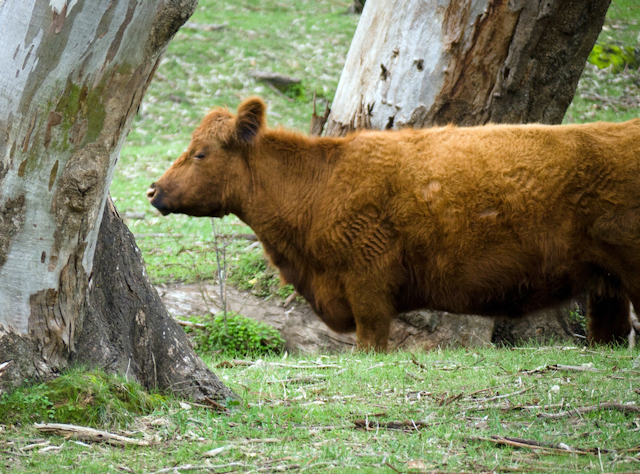According to the ABC, Senator John Williams has called for cattle grazing in national parks to reduce the risk of fire:
The problem in our national parks is that when we have these savage fires with these huge amounts of fuel per hectare, we’re killing the trees, we’re killing the animals, the koalas and those that live in these areas and they call it conservation. In many respects, the national parks are not conserved because of the way that they’re managed.
Senator Williams’ comments pertain to the recent fires in western NSW. I am not an expert on those particular ecosystems. But, the philosophy - grazing reduces blazing and this is good for the environment - is based on two assumptions: that large fires of themselves are by their nature a threat to biodiversity and Park values, and that grazing is a universally effective fire mitigation tool because of the effect on fuel load.
Neither assumption is supported by any broad, consistent body of scientific evidence that I know of.
With respect to the former, fires certainly consume vegetation and kill animals - but there are hard wired mechanisms for species and ecosystems to regenerate post-fire (including after large, severe fires) in the vast majority of Australian ecosystems. Individuals may die, but species usually persist.
With respect to the second, the effect of fuel treatment on fire spread and severity is highly contingent on weather - the worse the fire weather, the less effective fuel reduction treatments are in modifying fire behaviour.
Further, and just as importantly, what the Senator fails to point out is that livestock grazing is known to have detrimental effects on Australian native ecosystems - after all, Australian ecosystems have evolved in the absence of hard hooved animals such as sheep and cattle. So, to justify the use of livestock to manage fire for environmental benefits in national parks (at least on scientific grounds) the following would need to be demonstrated:
That there is an obvious biodiversity problem associated with large, hot fires.
Grazing is an effective tool to mitigate fire extent or severity at landscape scales under the weather conditions that lead to large fires, such as during hot dry, windy days. Assuming that because stock eat grass (and other fuels) and therefore achieve this mitigating effect is insufficient. Grazing also needs to be shown to be more effective than alternative methods, such as fuel reduction burning, that have measurable effects on fire behaviour.
That the biodiversity cost of grazing (removal of vegetation, selective grazing of plants, trampling of soils, pollution of water ways) is much less than any putative fire mitigation benefits that grazing might bring.
As far as I know, there is little or no evidence to demonstrate these three things in any Australian National Park.

